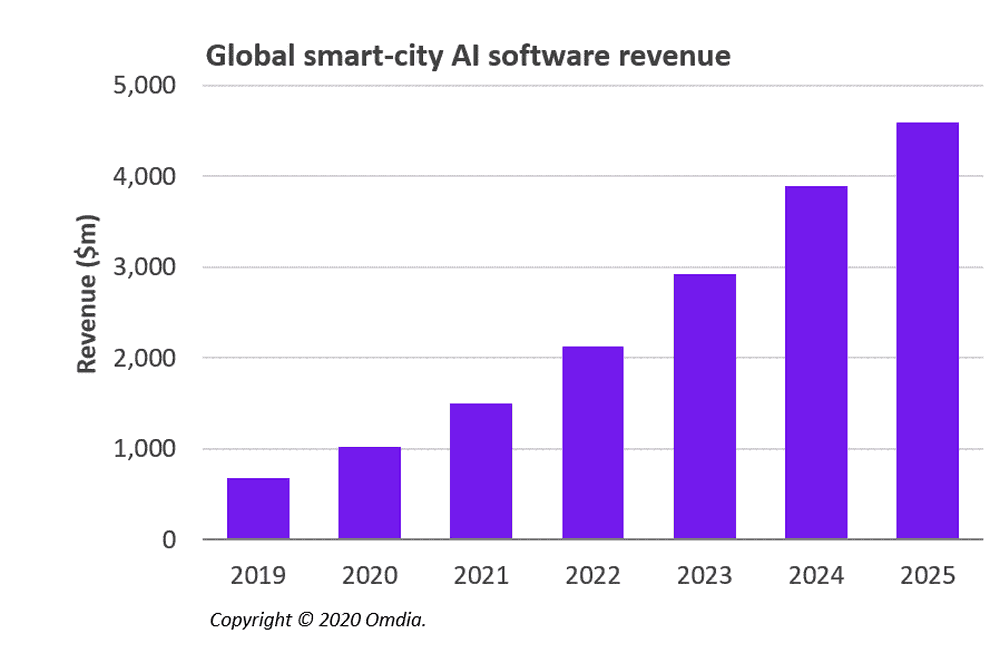The advent of 4G and 5G internet of things (IoT)-based connectivity is spurring the online migration of smart city applications, helping generate a more than sevenfold increase in smart city artificial intelligence (AI) software revenue by 2025.
According to Omdia, the global smart city AI software market is set to soar to US$4.9 billion in 2025, up from $673.8 million in 2019.
Wireless data communications standards are enabling smart city applications to move into the online realm, where they can capitalize on the latest AI innovations. The growing capabilities of AI are enabling data and insights collected through IoT networks to be monitored, analysed and acted upon.
Keith Kirkpatrick, principal analyst for AI at Omdia, noted the smart city use cases are defined by the collection, management and usage of data.
“However, until recently, connecting disparate components and systems together to work in concert has been challenging due to the lack of connectivity solutions that are fast, cost-effective, low latency and ubiquitous in coverage. These challenges now are being overcome by leveraging advances in AI and connectivity,” he continued.

The arrival of 4G and 5G wireless data technologies are making it easier to collect and manage data, promoting the migration of smart city AI software to the online realm. AI allows data to be analysed more deeply than ever before.
The technology can identify patterns or anomalies within that data, which then can be employed for tasks that allow machines to mimic what humans might consider being intelligence.
Using the power of AI, smart city systems can create municipal systems and services that not only operate more efficiently but also provide significant benefits to workers and visitors.
These benefits can come in many forms, including reduced crime, cleaner air, more orderly traffic flow and more efficient government services.
Leveraging AI for video surveillance
One example of how smart cities are leveraging AI is in the video surveillance realm.
When hosting public events, some cities are beginning to use video cameras that are mated to AI-based video analytics technology. The goal is to have AI algorithms scan the video and look for behavioural or situational anomalies that could indicate that a terrorist act or other outbreaks of violence may be about to occur.
Cities are increasingly employing cloud-based AI systems that can search footage from most closed-circuit TV (CCTV) systems, allowing the platform and technology to be applied to existing camera infrastructure.
Video surveillance can be combined with AI-based object detection to perform tasks including learning patterns in an area; detecting faces, gender, heights and moods; reading license plates; and identifying anomalies or potential threats, such as unattended packages.
As the use of surveillance cameras has exploded, AI-based video analytics now represent the only way to extract value in the form of insights, patterns, and action from the plethora of video data generated by smart cities.



